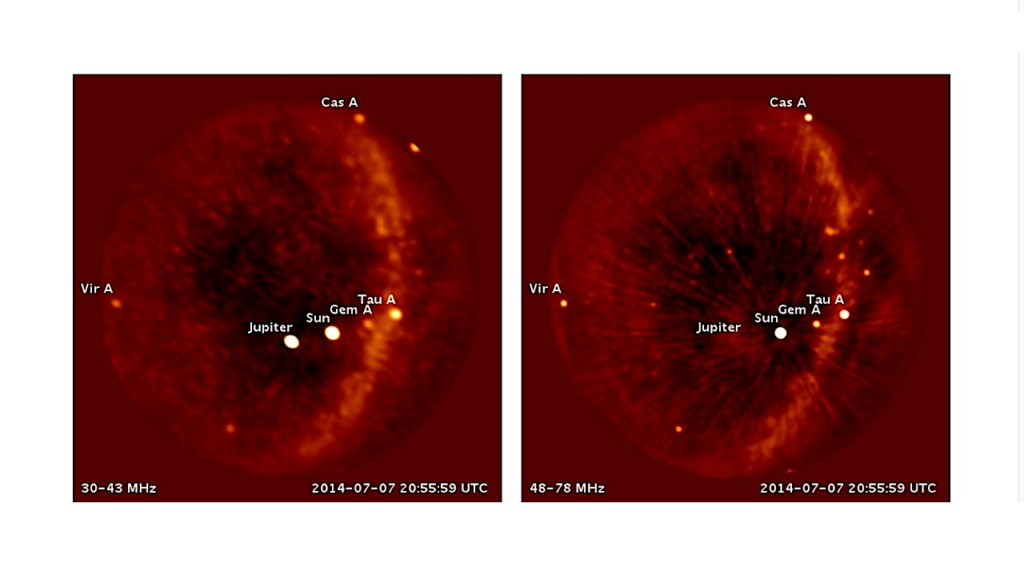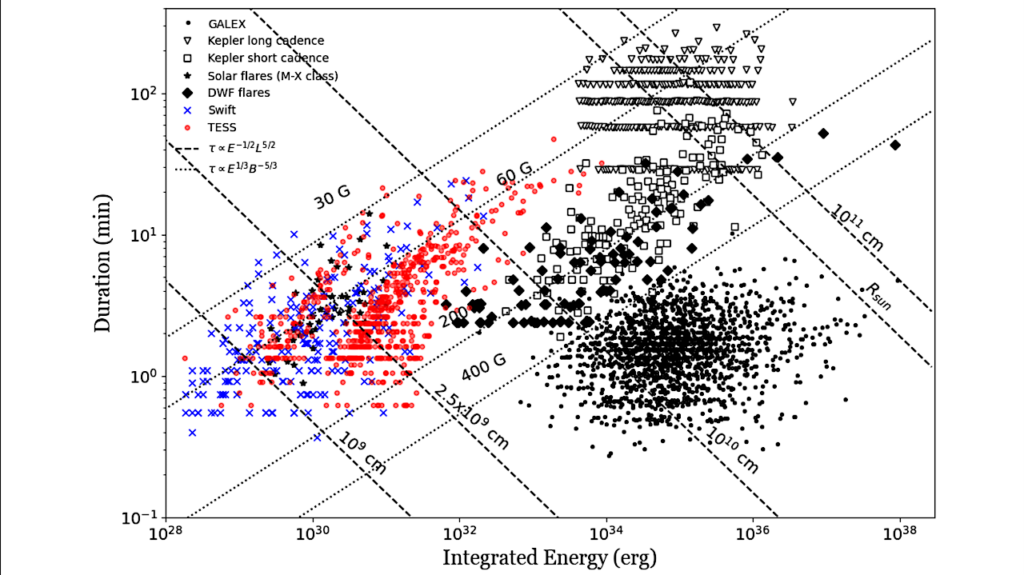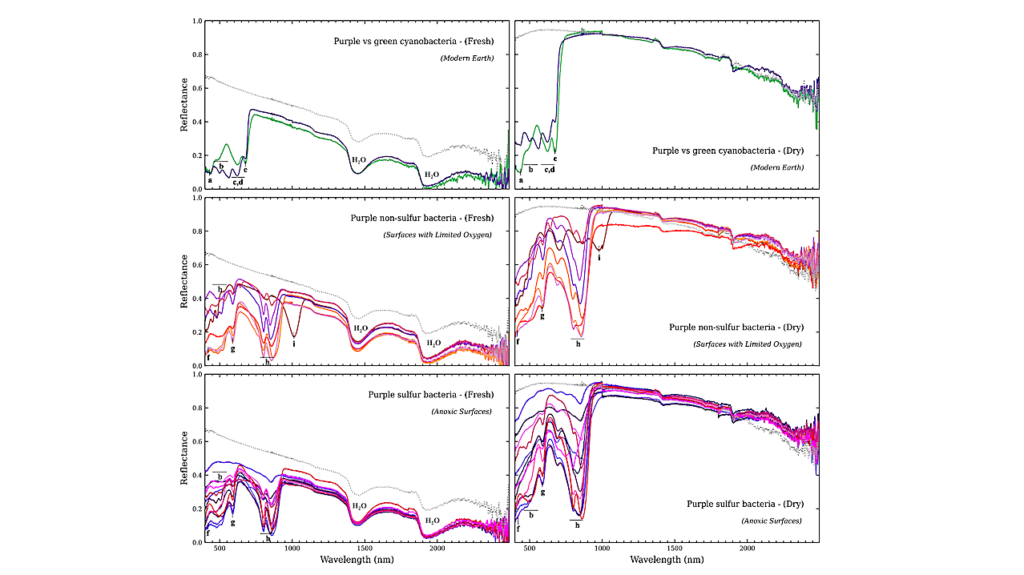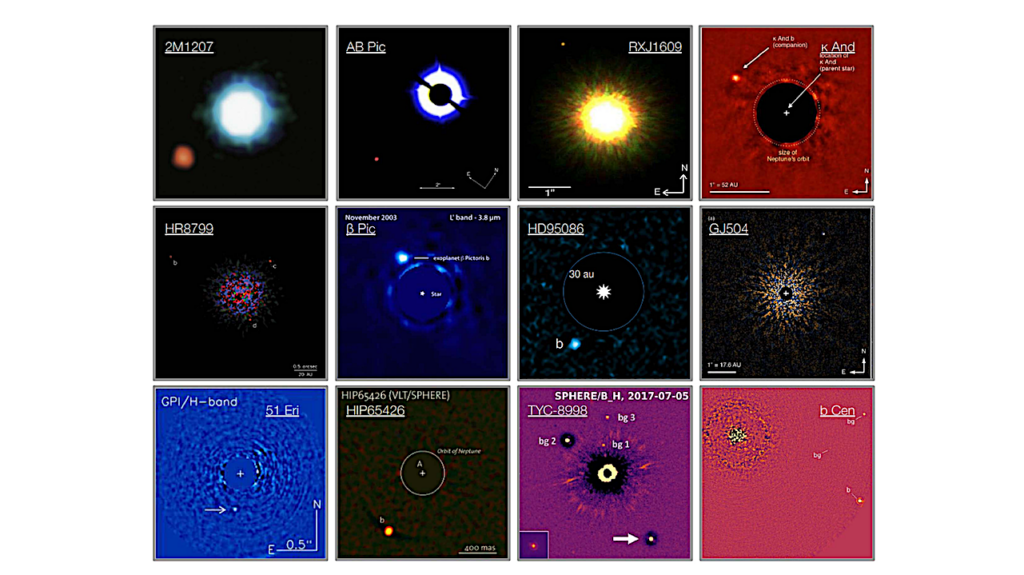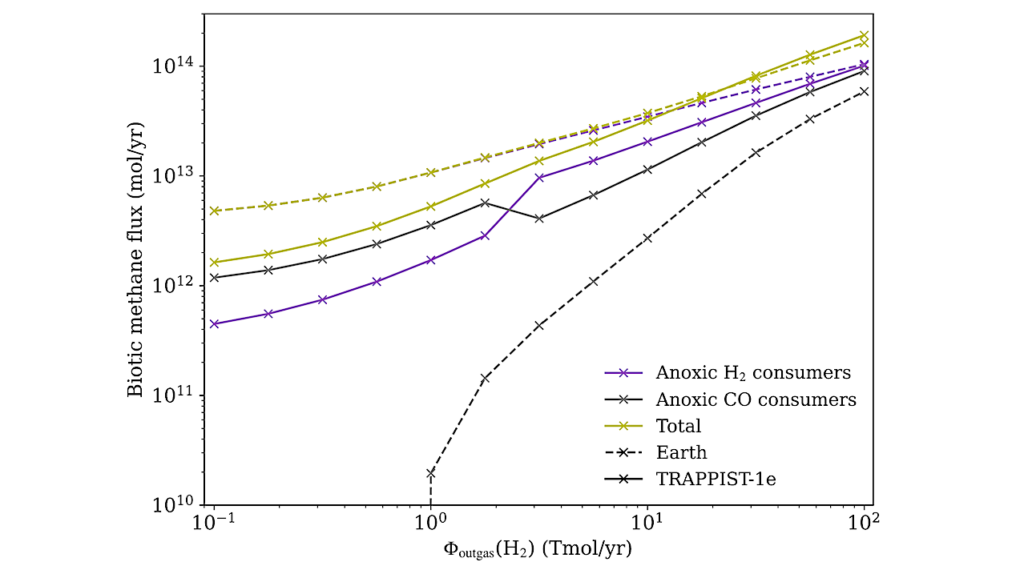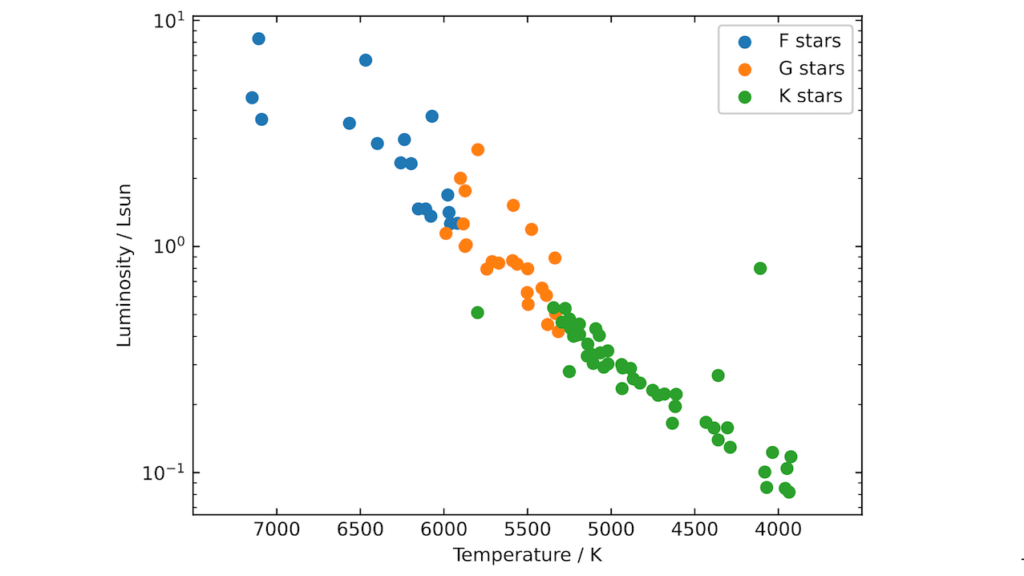Water UV-shielding In The Terrestrial Planet-forming zone: Implications For Carbon Dioxide Emission

Carbon Dioxide is an important tracer of the chemistry and physics in the terrestrial planet forming zone.
Using a thermo-chemical model that has been tested against the mid-infrared water emission we re-interpret the CO2 emission as observed with Spitzer. We find that both water UV-shielding and extra chemical heating significantly reduce the total CO2 column in the emitting layer. Water UV-shielding is the more efficient effect, reducing the CO2 column by ∼ 2 orders of magnitude. These lower CO2 abundances lead to CO2-to-H2O flux ratios that are closer to the observed values, but CO2 emission is still too bright, especially in relative terms.
Invoking the depletion of elemental oxygen outside of the water mid-plane iceline more strongly impacts the CO2 emission than it does the H2O emission, bringing the CO2-to-H2O emission in line with the observed values. We conclude that the CO2 emission observed with Spitzer-IRS is coming from a thin layer in the photo-sphere of the disk, similar to the strong water lines. Below this layer, we expect CO2 not to be present except when replenished by a physical process. This would be visible in the 13CO2 spectrum as well as certain 12CO2 features that can be observed by JWST-MIRI.
Arthur D. Bosman, Edwin A. Bergin, Jenny K. Calahan
Comments: 8 pages, 4 figures, accepted for publication in ApJL
Subjects: Earth and Planetary Astrophysics (astro-ph.EP)
Cite as: arXiv:2207.02236 [astro-ph.EP] (or arXiv:2207.02236v1 [astro-ph.EP] for this version)
https://doi.org/10.48550/arXiv.2207.02236
Focus to learn more
Submission history
From: Arthur Bosman
[v1] Tue, 5 Jul 2022 18:01:07 UTC (2,089 KB)
Astrobiology, Astrochemistry


